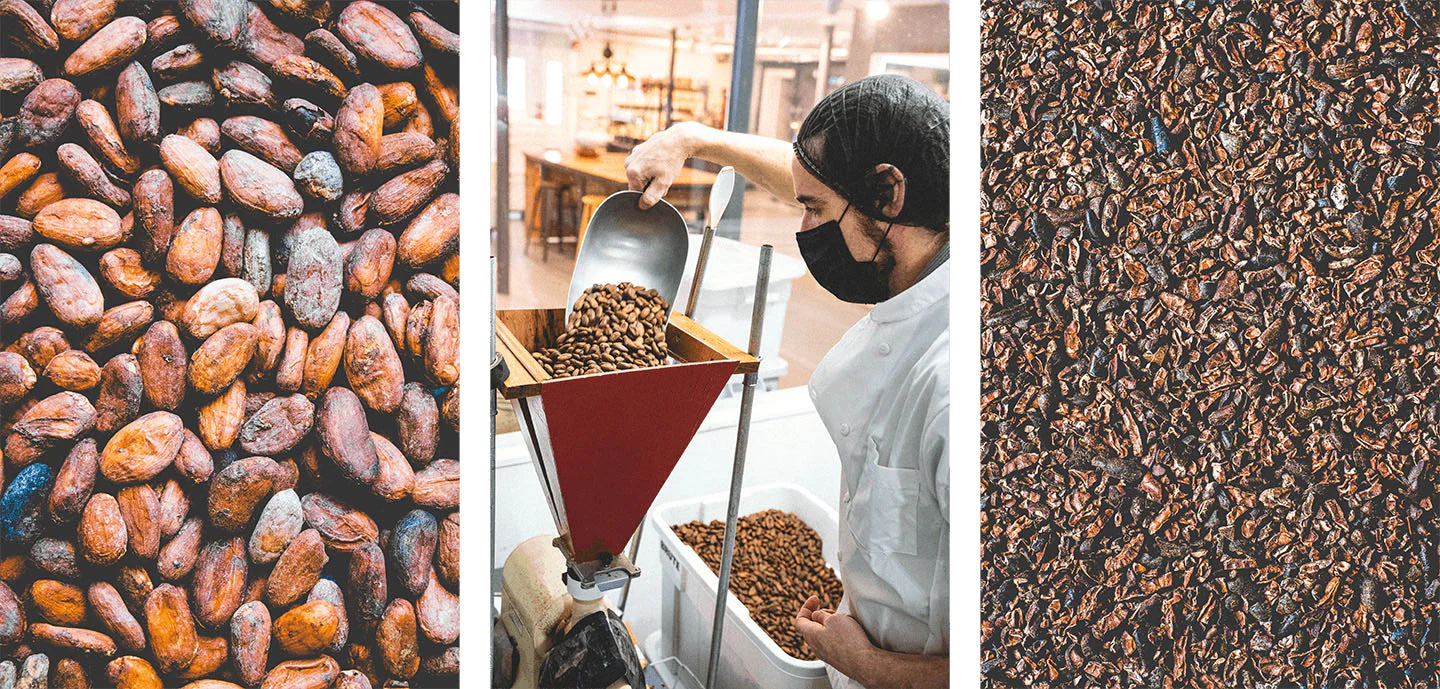Our Craft
Chocolate starts with cacao.Where does cacao come from?
Growing Cacao
Fermenting and Drying Beans
Shipping and Receiving Beans
Once dried, both cacao and coffee beans are gathered for shipping. Some co-ops gather beans from different farms in the area, others have their own farm that they gather beans from. All of the co-ops and farms we work with pay premiums to the farmers they gather beans from, ensuring it’s worthwhile for farmers.
Beans are bagged in large jute sacks which then get shipped overseas to our chocolate and coffee factory in Honesdale, Pennsylvania. Pictured here is Co-founder Jeff in Cameroon, standing next to jute bags full of coffee.











